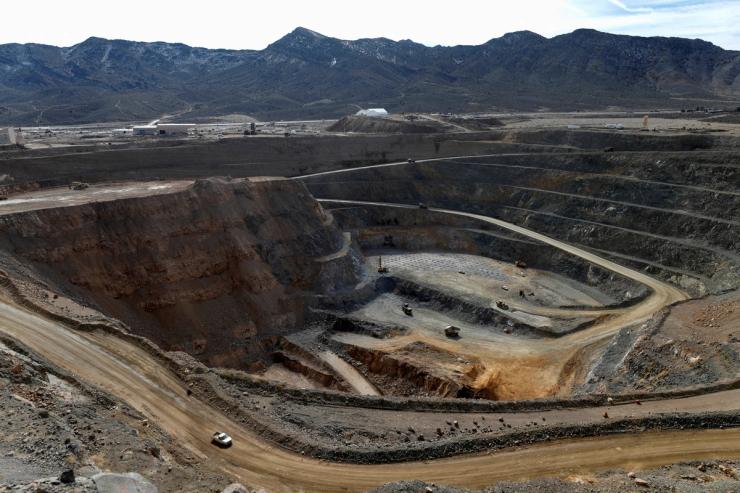Andy’s view
In 2010, during a flare-up of a long-simmering territorial dispute between China and Japan, Beijing unleashed a weapon it had never used before.
Without any public announcement, Chinese companies stopped shipping rare earths to Japan. The silent move threatened to cripple the country’s all-important electronics industry. I was covering the story from Beijing for The Wall Street Journal, and it seemed at the time like a warning. A new kind of China was rising: more assertive, less worried about its global image, and ready to throw its weight around — just like the US.
Now, China is using rare earths as a bargaining chip once more. But this time, the repercussions could be even more consequential.
- For more analysis and insight on how China is changing the world, sign up for Semafor’s forthcoming China briefing.
Under a licensing regime that Beijing unveiled last week, manufacturers anywhere in the world that build products with even a trace of Chinese rare earths need China’s approval to export them. The move could affect global trade flows: In theory, cars made in Poland now can’t be sent to Germany without Beijing signing off. It could alter the trajectory of the war in Ukraine if China, which is backing Russia, tries to veto arms transfers from Europe to Kyiv. And it could scramble geopolitical alignments as the US and other Western countries court governments in resource-rich Central Asia, Africa, and Southeast Asia for alternative rare earth supplies.
In a sense, China is merely mirroring long-standing American restrictions: The US has used “long-arm” controls to deny China access to the world’s most advanced chipmaking equipment, machines which contain US technology.
In fact, the Chinese regime is more potent. Rare earths are present in just about every high-tech product imaginable: China has the tools to shut down Detroit’s carmakers, throw a wrench in Silicon Valley’s AI build-out, and knock out much of the US defense industrial base — F-35 fighters each contain over 900 lbs (400 kg) of them; laser-guided missiles are packed with rare earth magnets.
China controls 90% of the global supply of rare earths: In effect, it has seized the levers of the modern economy.
Japan was alarmed enough by the 2010 embargo — quietly lifted as Sino-Japanese relations improved — to launch a crash recycling program to reduce its China risk. But the US and others never learned lessons from the episode, creating a critical vulnerability not just for the American economy but the rest of the world, because the US is a major exporter of technology. Germany, for example, says that the new Chinese restrictions are of “great concern.”
In the near term, Beijing clearly believes its rare earth gambit gives it the upper hand against Washington in a tit-for-tat trade battle now under way: Hu Xijin, a fiery Chinese nationalist and former propagandist, posted on X that the US can “smash many of the lightbulbs in China’s main building” but China can “cut off the electricity” to America’s. Matt Pottinger, the deputy national security adviser during US President Donald Trump’s first term who now runs the China-focused consultancy Garnaut Global, thinks that Beijing “must be assuming that Trump will capitulate.” Indeed, the American leader will likely have to make a trade deal with his Chinese counterpart Xi Jinping.
The longer-term challenge for the US is also daunting — how to play catch up in a slow-moving industry, one in which Chinese state enterprises control prices — but not insurmountable. It needs to catch up fast, though. Think “Operation Warp Speed,” the COVID-19 vaccine program in Trump’s first term, applied to industry.
A part of the answer will be working with allies. Rare earths, actually, aren’t that rare: Australia, Canada, and countries in Latin America have ample deposits, as well as advanced mining and refining technologies. A less confrontational US approach on trade to some of these countries would help build cooperation. Indeed, the Trump administration in June agreed with G7 allies to work together to protect supplies of critical minerals.
Washington is also using its financial heft to gird itself against risk: The Pentagon is reportedly building a $1 billion stockpile of critical minerals, the US government has taken stakes in several mining firms, and JP Morgan has just unveiled a $10 billion fund to invest in industries critical for national security, including rare earths.
New technologies also hold promise. In 2010, after the Japan scare, the US Department of Energy handed out small research grants to a dozen companies working on alternatives to rare earth technologies. One of them was Niron Magnetics, which broke ground a few weeks ago on a plant in Minnesota to produce magnets that use iron and nitrogen rather than rare earths.
“The West is in a crisis,” Niron’s CEO Jonathan Rowntree told me, noting exploding demand for magnets, a sector dominated by Chinese firms — and reliant on Chinese rare earths.
Niron will launch its first products next year, and when the technology reaches scale, Rowntree believes it will be a match for Chinese magnets . “We’re not playing the same game,” he says. “We’re doing what the US does best: out-innovating.”
How quickly the Trump administration moves to narrow the gap on rare earths will be a test of its ability to drive industrial policy in other areas where the US has fallen way behind its chief geopolitical rival, sectors such as shipbuilding and drones.
If not, it risks paying a heavy price for complacency.
Correction: Niron produces magnets. An earlier version of this story incorrectly stated it makes batteries.
Notable
- China’s new restrictions will have “major national security implications,” says Gracelin Baskaran, an expert at the CSIS think tank.


